Category: Vision
October 20, 2012
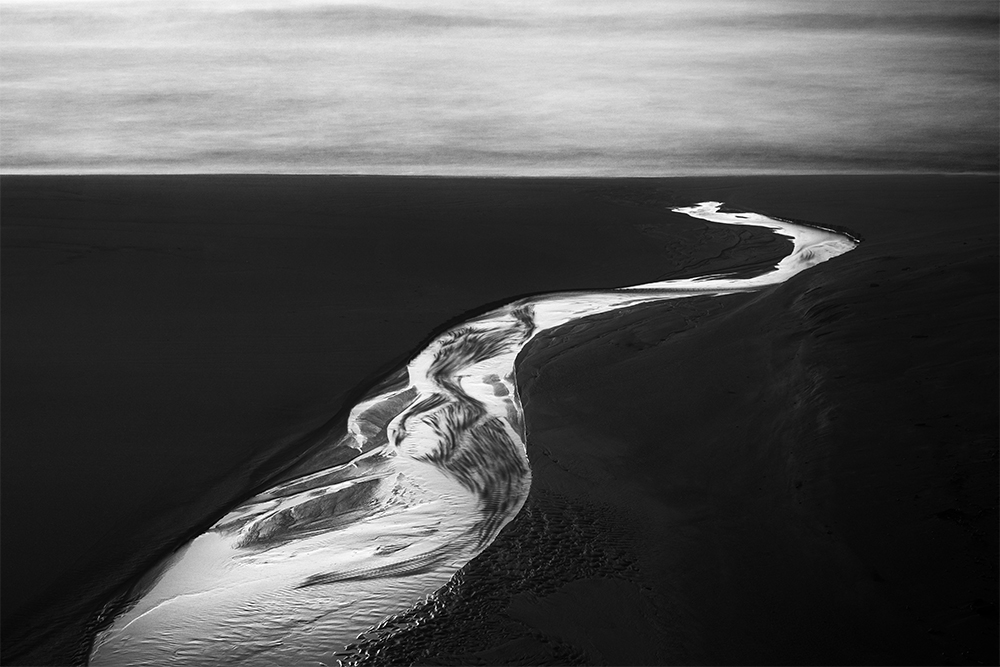
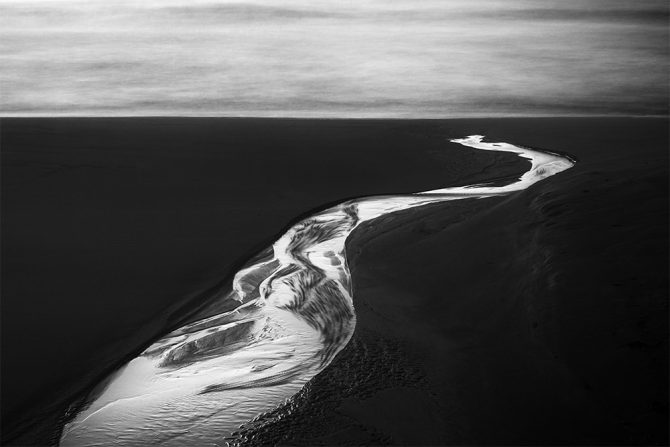
Many people assume that I’m working in film and others are surprised to learn that I photograph in color. Let me explain.
All of the work you see on my website (with the exception of the 1970’s portfolio) was created digitally. I switched to digital in 2004 after working 35 years in the darkroom. And I’ll be honest, while I have fond memories of those darkroom days, I do not miss them and I would not go back.
Why? Because my work is better since I began using digital.
I’ve often heard the assumption that digital is suitable for color but not for black and white. That has not been my experience. I’ll use whatever tools give me the results I’m looking for and I have absolutely no allegiance to the process; film is not sacred, digital is not sacred, old processes are not sacred…the only thing that is sacred to me is the image.
Perhaps more surprising to some is that I shoot all of my images in color. I’ve written that I shoot in B&W mode and so you might wonder how can that be? Shooting in B&W mode allows me to see the camera’s preview image in black and white, but I save my files in RAW which means they are really in color.
Confusing? When you shoot in RAW all of those settings such as B&W mode, sharpness, saturation, toning, color balance…are not recorded in the image. RAW means just that, it’s a raw capture without any of those tweaks and the image is recorded in color.
This is a wonderful thing! This combination of B&W mode and RAW allows me to preview the image in black and white but process from the color image. Why do that? Because I don’t want my camera or software to decide how my images should look in black and white, the black and white processing is what makes my images “mine!”
Sometimes I’ll show people the “before” color photograph to illustrate how my vision and processing has changed the image.
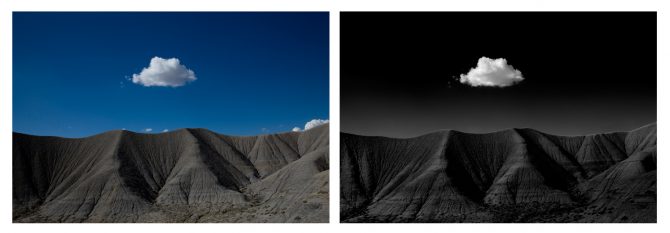
My vision drives my processing and I’ll happily use whatever tools and processes best helps me do that.
Cole
October 4, 2012

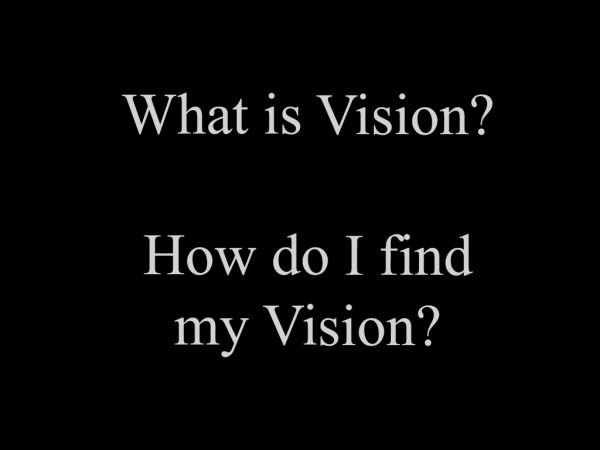
Recently a friend told me of her frustrations as she sought to find her Vision and this brought back memories of my own journey. For years I was confused as to what Vision was and frustrated because I didn’t know how to find mine.
I had absolutely no idea how to find my Vision. I was told that I had to keep working at it, but how? It was frustrating because it was such a nebulous concept and I had no idea how to proceed.
And the truth was that I wasn’t sure that I was capable of having Vision. I was raised in a home where the arts were not emphasized and I never developed creative skills; instead I was logical, methodical and gravitated towards mechanical things. I wondered if some people were just naturally creative and others were not, and feared that I was in the “not” category.
The good news is that not only did I find my Vision but I am absolutely convinced that everyone has one. It may be buried deep under a lot of “stuff” and it may be atrophied from lack of use, but it is there and you can find it.
What is Vision? It is the sum total of my life experiences that makes me see the world in a particular way. Because my experiences are different than yours, my Vision will be different than yours. And since my Vision is based on my experiences, it will change with time.
Vision is what makes me see an image that others may not see, or see it differently. Have you viewed a great image that was created where you had photographed before? I used to wonder why someone else could see that image and I could not, I believe it’s because we have different Visions. The good news is that it works both ways and sometimes you’ll see an image where others do not. The important point is that you should pursue your Vision and not try to see what others see.
Because Vision is simply your experiences and how you see life, I am convinced that everyone has one. It just needs to be discovered. Sometimes that is hard because it can be buried beneath a lot of “stuff” such as self doubt and a lack of creative experience, as was in my case. But I found mine and am absolutely convinced that each person is capable of finding theirs too.
So how did I go about finding my own vision? I had this idea that to follow my Vision was synonymous with following my heart and so I took all of my images and divided them into two piles; ones that I REALLY loved and everything else. I purposely ignored “good” images or ones that others liked and ones that sold the best because I didn’t want to consider what others thought, I only wanted to consider what I thought.
Then I started studying those images to understand what they had in common. I noticed that when I was doing what I loved and pleasing myself, my images had a particular look and mood. I also noticed that what I was photographing and how I was photographing was changing; I was moving away from my landscape roots and creating a different kind of work.
Once I found my Vision, there was still a challenge, and that was to religiously follow it. I was so used to copying others, pleasing others and following trends that I had to train myself to only pursue images that followed my Vision. When you copy others, the best you can ever hope to achieve is being a great imitator. When you seek to please others, you end up not pleasing yourself. When you follow trends, you are like the blowing grasses which are buffeted by every wind. Following your Vision is the only way to achieve satisfaction.
Over the course of two years (it was a slow and painful process) I found my Vision. It was not a “Eureka!” moment, but rather it crept up on me slowly until one day I just realized that I had one. I cannot put my Vision into words, but now I understand it and what was once so mysterious now seems so simple.
Finding my Vision gave me a tremendous feeling of freedom and confidence. I no longer felt constrained or bound by the opinions of others, I was free to create what I wanted and how I wanted, regardless of who liked it. The most important thing was that I was happy with my work. Finding your vision does not guarantee critical or financial success, but it will bring about personal satisfaction. Ironically, as I stopped caring what others thought and created for myself, my work became more popular with others.
Vision is more important than your equipment, your location or your processing techniques. Vision is the most important ingredient in a great image and I am absolutely convinced that everyone can find theirs.
Cole
April 19, 2012


The April edition of NEWS de Cordoba features all sixteen images from The Ghosts of Auschwitz-Birkenau portfolio. This is the official publication for the Photographic Association of Cordoba, Spain. I was greatly honored that they chose my image for the cover.
Also, I recently completed an interview for 121 Clicks which I really enjoyed because I was asked questions that I’m not normally asked.
Interview With Fine Art
Photographer Cole Thompson
An Introduction about you
I grew up moving around the United States, my father was in the Air Force and so we never stayed in one place for very long. We finally settled in Southern California and this is where I call home, it was a good life growing up on the beach.
I married and started a family in California, but in 1993 we moved to Northern Colorado and we now live on a small ranch.
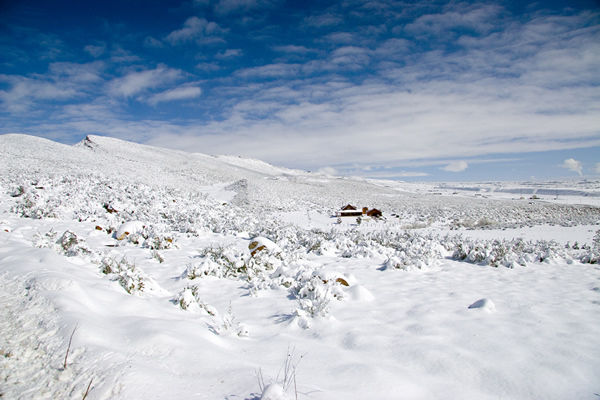
I have a full time job (which is a surprise to most people) where I have worked in private education for the last 31 years. I have five children, three daughter-in-laws and one grandchild. I am 57 years old.
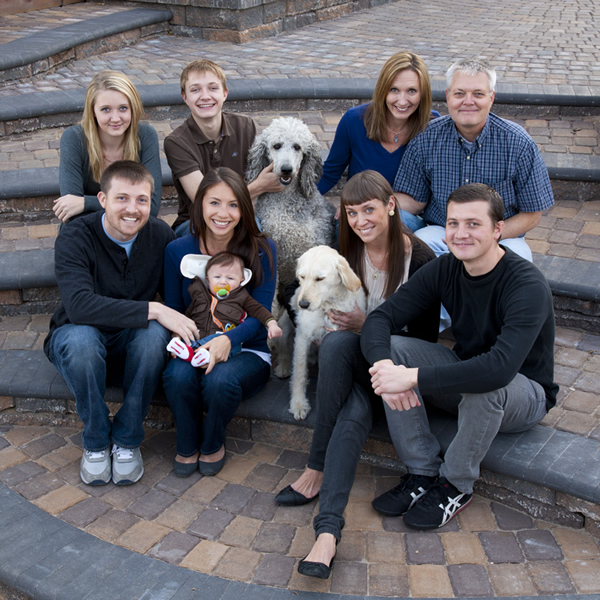
The loves of my life are: my family, photography, architecture and scuba diving. My life is pretty average and unremarkable.
How did you get into photography?
I was living in Rochester, NY (the home of Kodak) as a 14 year old boy. I was out hiking with a friend when we came across the ruin of an old house. My friend told me that it had once been the home of George Eastman, the founder of Kodak.
This piqued my interest and so I checked out his biography from the school library and read it in just days. I was so fascinated with photography that before I had even finished the book, before I had taken a picture or seen a print come up in the darkroom, I knew that I wanted to be a photographer.
So, like millions of kids before me, I purchased a small developing kit and took over the family bathroom. I am self taught and for the next ten years I read everything there was on photography and if I wasn’t reading about photography, I was out shooting or in the darkroom. I spent a great deal of time studying the works of the great masters: Ansel Adams, Edward Weston, Paul Caponigro, Paul Strand, Dorothea Lang, Wynn Bullock and many others.
I have always been drawn to a particular type of photograph; black and white, dark images with high contrast. These images mesmerized me and I wanted to create images just like these. Here is what I consider my first “good” image, created at age 14.
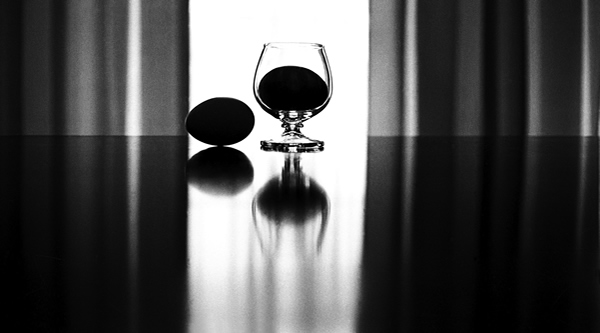
During these early years I thought of myself a “photographer” and thought that it was a “sin” to modify my images. I thought my duty as a photographer was to portray a scene as realistically as I could. Of course I now understand that everything I do modifies an image, but back then I believed my duty was to portray reality. Here is an image I created at age 17:
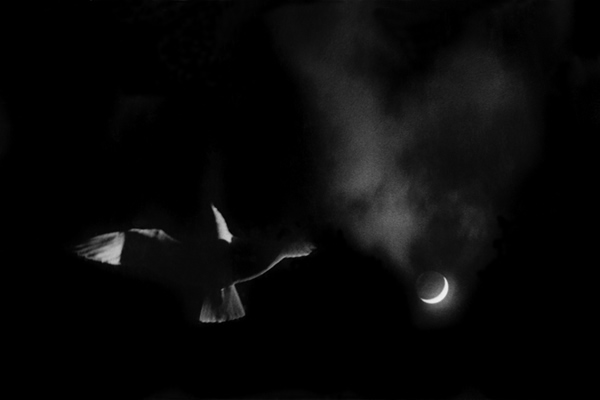
Thinking like a “photographer” was holding me back from developing my artistic abilities, but there also was another barrier that was preventing me from growing. I found myself not just studying the works of the great masters, but also trying to imitate their techniques and sometimes even their shots! Ansel Adams was my photographic hero back then and I remember how proud I would be when someone would look at one of my images and say “this reminds me of Ansel Adams’ work!” But something happened years later that would change how I felt about such a comment.
I was attending Review Santa Fe, this is where selected photographers show their portfolio to experts in the field and receive comments and suggestions. I was showing my work to the last reviewer of the day and he looked at my work, roughly pushed it back to me and said: “it looks like you’re trying to copy Ansel Adams.” I replied that I was, that I loved his work.
He then something very profound to me, he said: Ansel’s already done Ansel. What can you do that shows your unique vision?
Ouch! That comment really stung and I was so hurt that I could not hear his message for a very long time. But finally its meaning became clear to me; was my life’s ambition to be the world’s best Ansel Adams imitator? Was that all that I hoped to achieve with my art?
For years the comment: “your work reminds me of Ansel Adams’” was a huge compliment. Now it was an insult and evidence that I had failed to develop my own vision.
This was a turning point in my artistic life. It was the moment I vowed to stop copying others and the moment when I wanted to be an artist and not a photographer.
But I had doubts about my own vision; did I have one? How would I find it? How would I develop it?
I could find no instructions on how to find your vision and so I developed my own plan. First, I would stop looking at other photographer’s work, something I call “photographic celibacy.” I reasoned that if I was to develop my own vision, I could not continue to immerse myself in other people’s vision because doing that caused me to copy their work, either consciously or subconsciously.
Next I started using different words; I started to refer to myself as an artist and I stopped using the phrase “taking pictures” and would start saying “creating images.” It was a small thing, to change my words, but it served to remind me of my goals and what I wanted to achieve.
I also discarded my old belief that it was wrong to modify my images. It seemed to me that the entire purpose of an artist is to portray what they see through their vision, not with their eyes. So now when someone asks if I “manipulate” my images, I say “Yes!” and explain.
I also decided that I’d start ignoring what others thought of my work and focus only on what I thought of it. In the past I’d show people my images, ask them which ones they liked, and then I’d find myself going off in that direction. The problem with this approach is twofold: first you can never please everyone and so one day I was off in this direction and the next day I was off in another. Secondly, art should be about passion and that means I needed to pursue the images that I was passionate about.
After I stopped listening to others I stopped producing work that I did not love, no matter how much others liked it. If you have to choose between pleasing yourself and pleasing others, always choose to please yourself. At least when it comes to art!
So that was my program to find and develop my own vision. It was a very difficult and frustrating process and it took me several years, but gradually I started to recognize my vision. The first image that I created with this new outlook and philosophy was The Angel Gabriel:
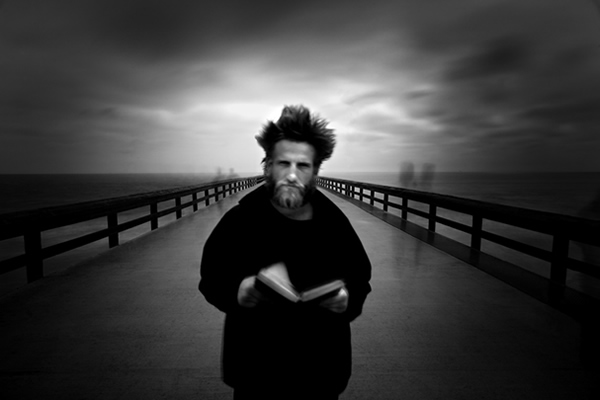
This was the first time that I had purposefully created something from my vision, and it was the first time I modified the image to bring the shot into compliance with that vision.
It’s been about five years now, since I made that determination to find my own vision. It’s not a destination and I’m still working on it, trying to see uniquely and to further develop my vision.
Have you ever felt like “I’m not able to convey my inner most thoughts to my subjects completely”?
I never consider the viewer when creating my art. I create for myself, not the viewer and my only obligation is to myself.
Nor do I explain my images to the viewer, they are what they are and each person is free to find their own meaning in them.
Does my art have meaning?
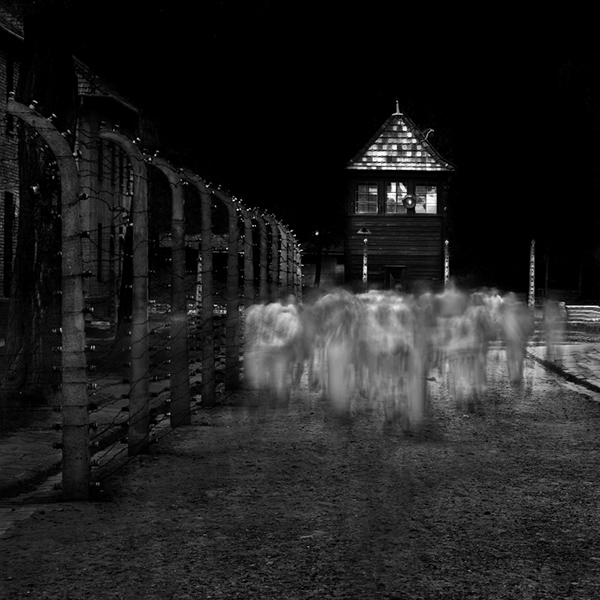
Sometimes my work has obvious meaning, such as “The Ghosts of Auschwitz and Birkenau.”
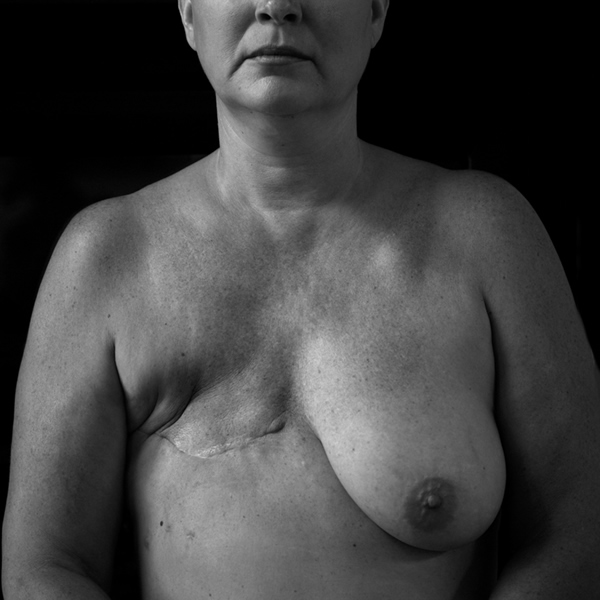
Or my series “Linnie, A Portrait of Breast Cancer.”
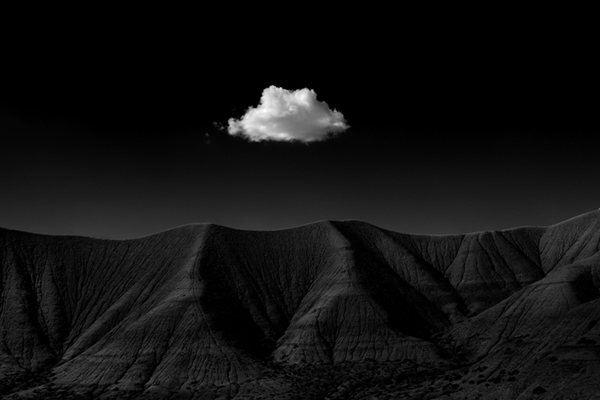
But often I’m simply creating beautiful images which may or may not have a deeper meaning. When people ask me what my images mean, or what was I trying to convey to the viewer, I think of these words from the song “With A Little Help From My Friends” by the Beatles: I can’t tell you, but I know it’s mine.
So no, I don’t have a problem conveying my inner thoughts to the viewer, simply because I’m not trying to convey anything. My images are what they are.
In your words what makes Fine Art Photography so special?
I look at great fine art images and I think; isn’t it obvious why these are so special? Can paltry words improve upon what these images convey?
I do not think words are adequate or needed. If a person cannot see the beauty in great images, words will not help.
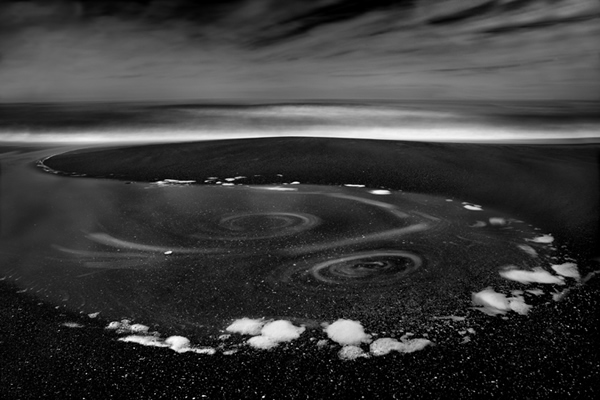
When I am seeing your work, you have traveled a lot. Which country you like and why?
Most of my travel has been inside the US and even then I’ve only seen a small part of my country. I have done some international travel: I visited Japan when my son who was in the military was stationed there, we went to Ukraine to visit another son who was serving in the Peace Corps, and then to England where we took a family vacation. I loved all three locations for different reasons.
The Japanese are so very polite and considerate and all I had to do was raise my camera on the street and hundreds of people would come to a stop rather than walk in front of me and ruin the shot. The Ukrainians are generous to a fault, and would give you their last bit of food and the shirt off of their backs. I love the quiet resolution of the British and the depth of history that is always visible to the eye. All three trips were incredible experiences that produced some wonderful images and memories for me.
But my favorite country would have to be the US and for obvious reasons; this is my home. The wide range of geography is just amazing from our wonderful coasts to Death Valley, from the Great Lakes to the Rocky Mountains. It is so vast that I doubt I’ll be able to see it all in my lifetime.
And then there is the American spirit, we are a very young country compared to the rest of the world, but we have such an independent “can do” spirit that makes all things possible.
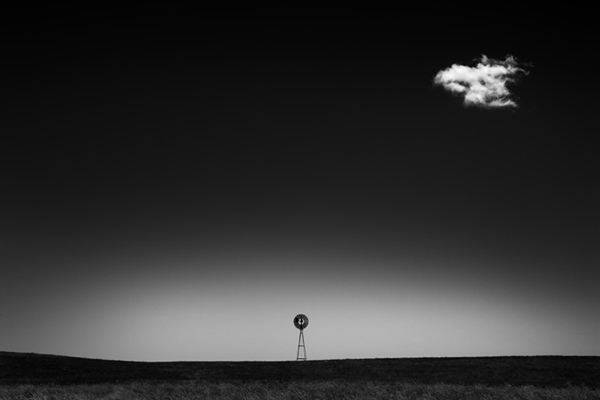
Most of your pictures are in Black & White any reason behind that?
I have always been drawn to black and white, even as a boy. But why? I think my artist statement sums it up best:
“I am often asked, “Why black and white?” I think it’s because I grew up in a black-and-white world.Television, movies and the news were all in black and white. My heroes were in black and white and even the nation was segregated into black and white. My images are an extension of the world in which I grew up.“
The truth is that while color catches my eye, black and white holds my attention.
I’ve only exhibited (2) color images in my life, and both somewhat recently.

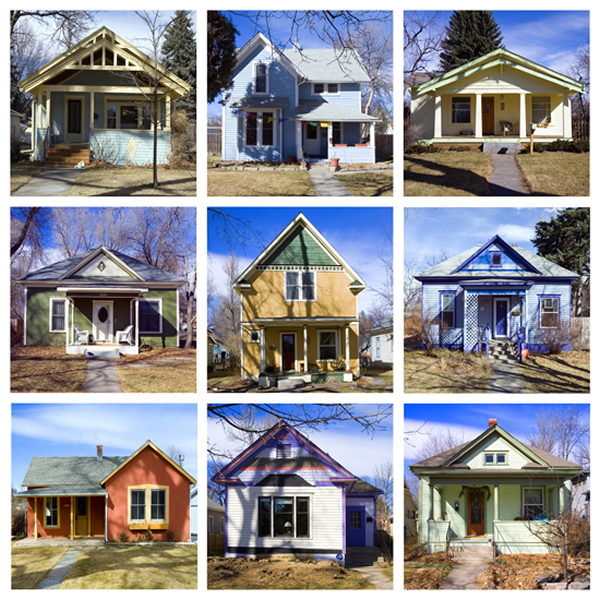
My color attempts were feeble and my heart just wasn’t in it. I’m a black and white guy, through and through, and I always will be.
For me color records the image, but black and white captures the feelings that lie beneath the surface.
In your language what it takes to make a Good Photograph?
I have a rule that describes the process of making a great image, it’s called “Cole’s Rule of Thirds” and it is: A great image is comprised of:
- 1/3 vision
- 1/3 the shot
- 1/3 processing
A great image begins and ends with your vision. Vision is the sum total of our life’s experiences that make us see things uniquely. When we look at a scene, it’s the way we instinctively see it in our minds eye. Our job as an artist is to bring that scene into compliance with our vision.
When we pursue an image with vision, then equipment and process becomes the servant and the creative process the master. It’s only then that great images can occur.
Vision is everything.
Looking back at your work, which of your pictures or stories make the strongest impression on you?
Each of my images has a story behind them. Sometimes the story is significant and everyone can relate to it, such as The Angel Gabriel, and other times the story is a simple and personal one and the image forever reminds me of it.
It would be impossible to choose just one, but here are several that I guess you could say are my “favorites.”

Harbinger : The story behind this image is one of a father and son, and one of fleeting opportunity that quick action captured. Full Story here

Windmill in Moonlight: This image will forever remind me to “Always Stop” when you seen an opportunity, for that opportunity will never repeat itself. Full Story here
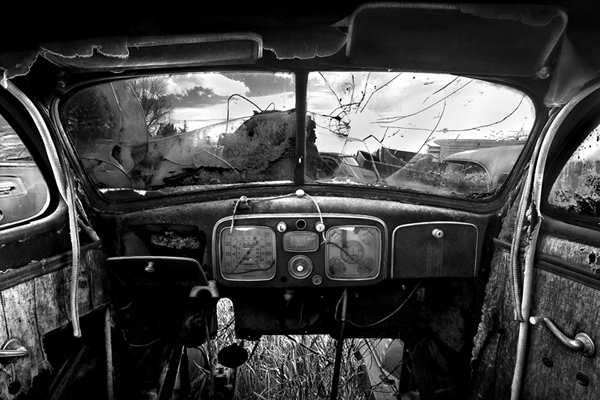
Old Car Interior: This image caused me to stretch my Photoshop capabilities beyond what I had done before. My Photoshop skills are so very primitive that Popular Photography called me “The Photoshop Heretic.” Full Story here
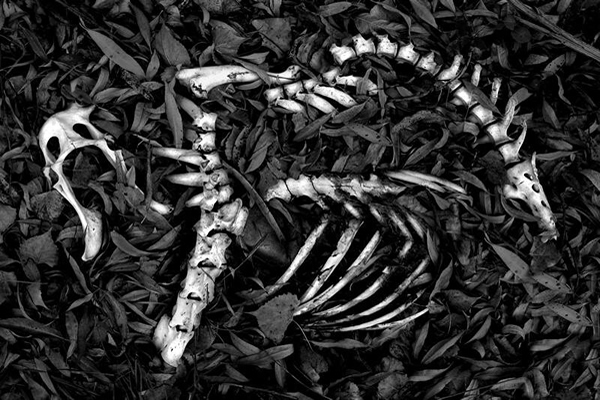
Skeleton: This is one of my favorite images, but rarely appreciated by others. It reminds me to always be looking for photographic opportunities; they are all around you, even at your feet.

The Angel Gabriel: I generally do not believe that the story should be necessary to make an image great, but this is a memorable story that everyone loves and remembers. Full Story here
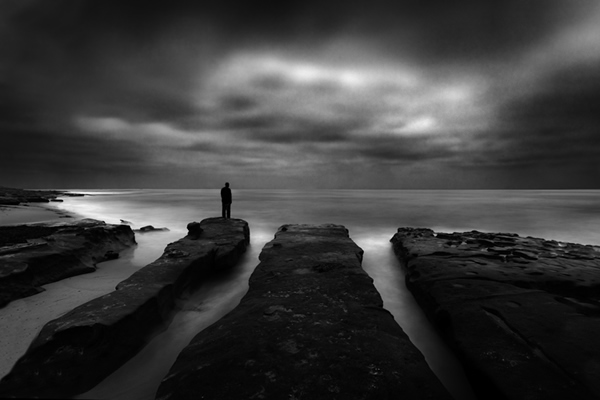
Lone Man: This is a series that actually has some meaning behind it, here is my artist statement. Full Story here. In this blog post I describe how I created it. Click here
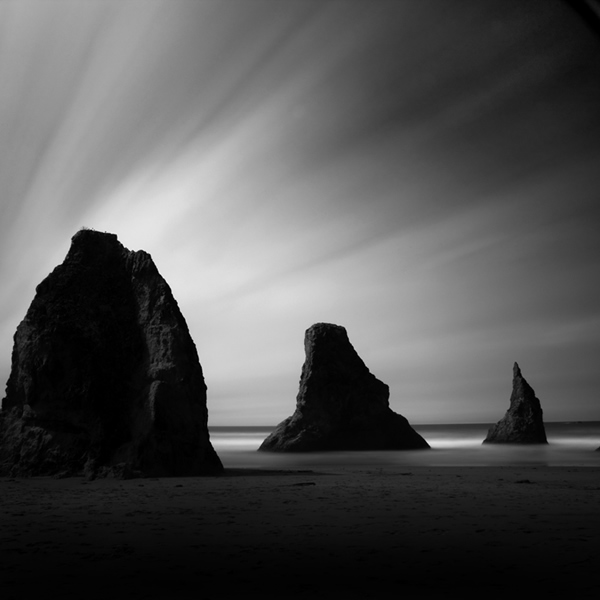
Monolith: Every September I go to Bandon Beach in Oregon. These Monoliths dominate the beaches there and they remind me of my childhood days reading Thor Heyerdahl’s book “Aku Aku ” which tells the story are the giant stone statues on Easter Island. Here is a video of my Monolith series.

Ceiling Lamp, Mourning Dove Ranch: This is my favorite image from my “Ceiling Lamp” series that reminds me that art does not need to be serious or herald a cause. Sometimes it can be frivolous and fun. Entire Portfolio here.

Auschwitz No.13: I think this is the most poignant image from my series “The Ghosts of Auschwitz-Birkenau” because it represents spirits leaving the gas chamber at Auschwitz.

But this is my favorite image from the series. See the complete series

Clouds:
This was another experience that reminds me to “always stop.” The family had just returned from a 2 week trip to Japan and we had been on the plane and the road for a very long time. As we approached home, just 5 minutes away, I saw this cloud structure and wanted to stop. But I knew I would incur the wrath of the family who were tired, hungry, jet-lagged and cranky.
I debated and decided not to stop. Then I remembered my past experience with Windmill in Moonlight and my resolve to “always stop.” I stopped and endured the yelling and screaming from the family, and in 5 minutes was on my way home and one of my most loved images was captured. Click here for large image
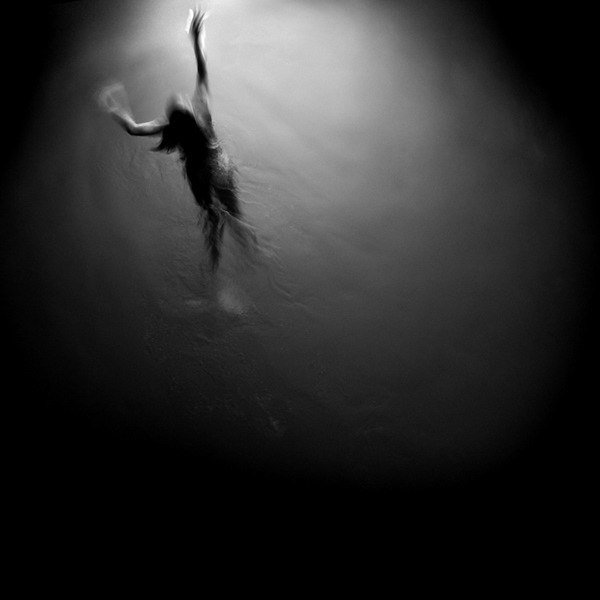
Swimming Towards the Light: This is one of my all-time favorite images, it’s my daughter in a swimming pool. I love it for the simplicity in the image and the message.
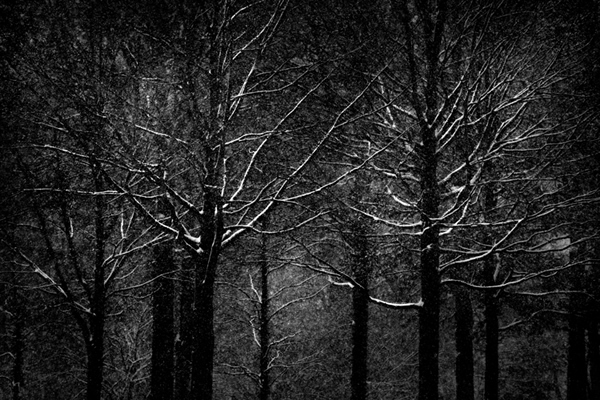
Blizzard:
This will forever remind me of the blizzard I was caught in one Spring day on the DC Mall and my attempt to avoid frostbite by entering the International Monetary Fund building just off the mall. I had about 3 minutes reprieve before a large female security guard threw me out of the building!
But it this image made it worth it!
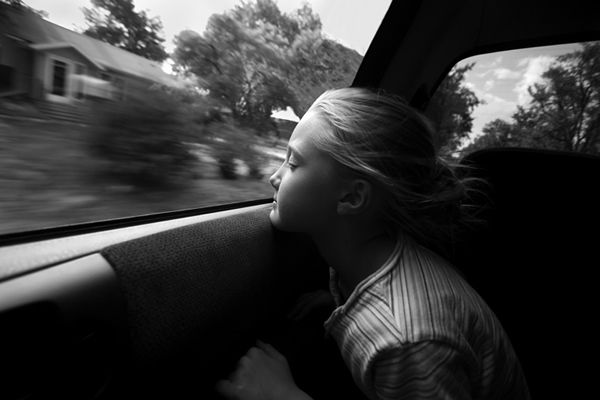
Windsurfing: This was a spontaneous moment, photographed while driving and hoping I could get the shot before my daughter became aware of the camera. I think most people can relate to this image.

Dunes of Nude: I’ve become attracted to sand dunes and their abstract resemblance to the human nude. This is my favorite from the series “The Dunes of Nude.” More Images
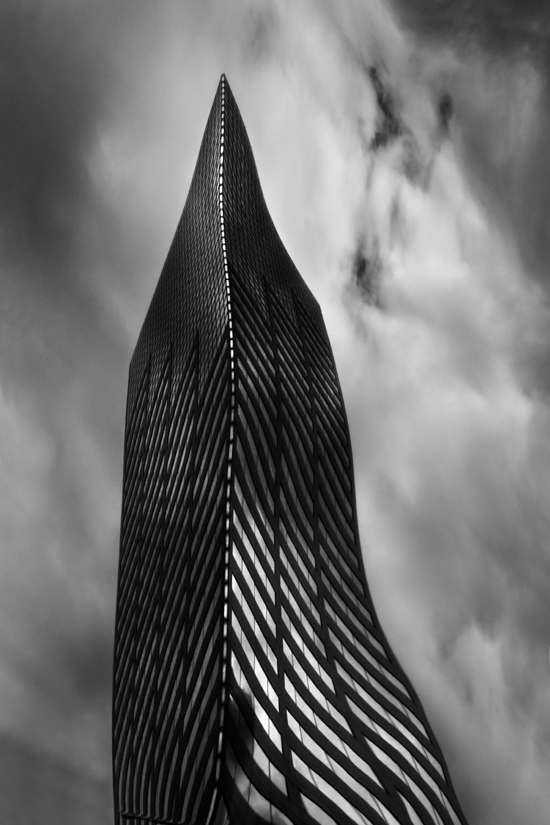
Fountainhead: This is my favorite image from the series “The Fountainhead.” I’ll always remember how much our rights as photographers have been limited by 911. I shot these images in about 15 cities and was molested about as many times. Full Story here
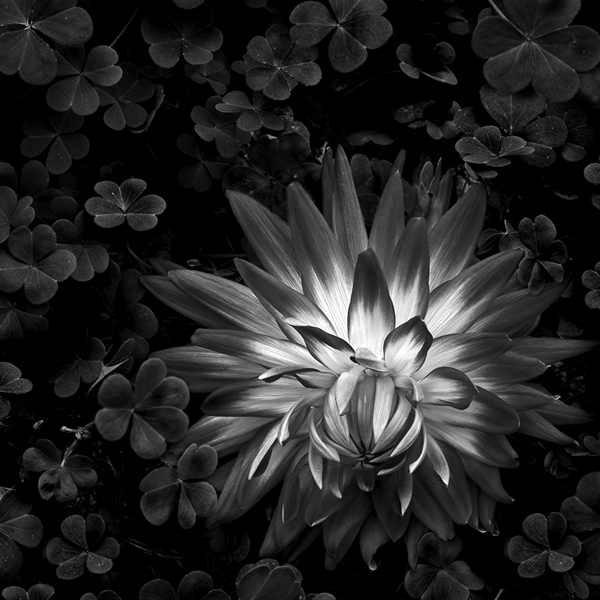
Flaming Dahlia: A simple and beautiful image of a Dahlia that was thrown away in a green house. One man’s trash is another’s treasure?. Full Story here
The best achievement/compliment you received so far and what is your intake about Awards and Compliments?
I used to meticulously maintain my resume, listing all of my awards, publications and achievements. But at a certain point it became clear to me that none of that mattered, and that the only thing that really matters is how I felt about my work.
For that reason I have retired my traditional resume and now say this:
My art has appeared in many exhibitions, publications and has received numerous awards. And yet my resume does not list those accomplishments, why?
In the past I’ve considered those accolades as the evidence of my success, but I now think differently. My success is no longer measured by the length of my resume, but rather by how I feel about the art that I create. While I do enjoy exhibiting, seeing my work published and meeting people who appreciate my art, this is an extra benefit of creating, but this is not success itself.
I believe that the best success is achieved internally, not externally.
So what honors do I value? The honors of a friend who loves my work enough to hang it in their home. Or the appreciative comments I receive from Holocaust survivors who see my work from Auschwitz-Birkenau. Those are the honors I value most.
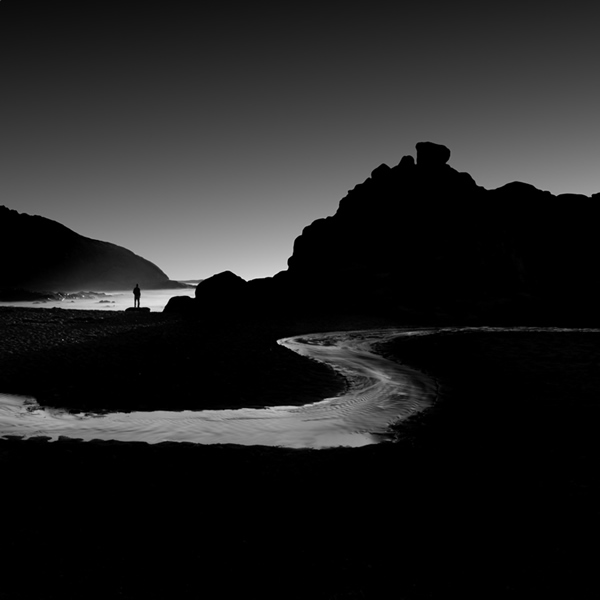
“I believe that the best success is achieved internally, not externally” – I feel it is a Saint like saying, any words for It?
When we are young, we sometimes pursue fame and fortune. As you get older, you realize that these are not the keys to happiness. There is nothing wrong with achieving fame and fortune, when they are the by-products of sincere and honest work. But when a person seeks after these things, my experience has taught me that they will be a hollow achievement.
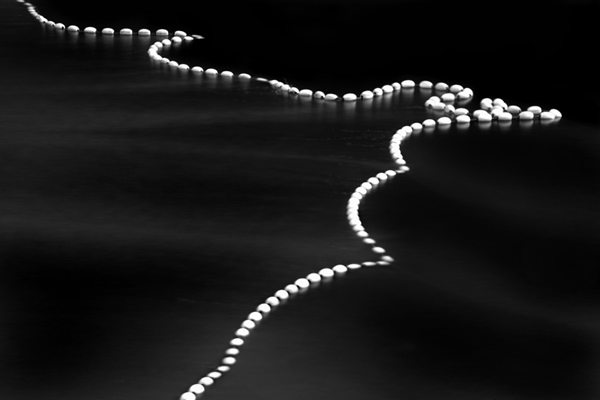
Which photographers have inspired you?
When I was young, Adams was the photographer I most admired but I also closely followed Weston, Caponigro, Strand and Bullock. Later in life I was amazed by the long exposure work of Alexy Titarenko and he was one of the main reasons I pursued long exposures.
But the man whose attitudes I admire the most is Edward Weston. I have read his Day Books many times and they never cease to inspire me. It was his independent attitude that has shaped much of my thinking about my art.
My favorite story that illustrates Weston’s attitude is told by Ansel Adams upon seeing his work for the first time:
“After dinner, Albert (Bender) asked Edward to show his prints. They were the first work of such serious quality I had ever seen, but surprisingly I did not immediately understand or even like them; I thought them hard and mannered. Edward never gave the impression that he expected anyone to like his work. His prints were what they were. He gave no explanations; in creating them his obligation to the viewer was completed.”
From Weston I have learned that it doesn’t matter who likes or doesn’t like your work, your opinion is the only one that matters.
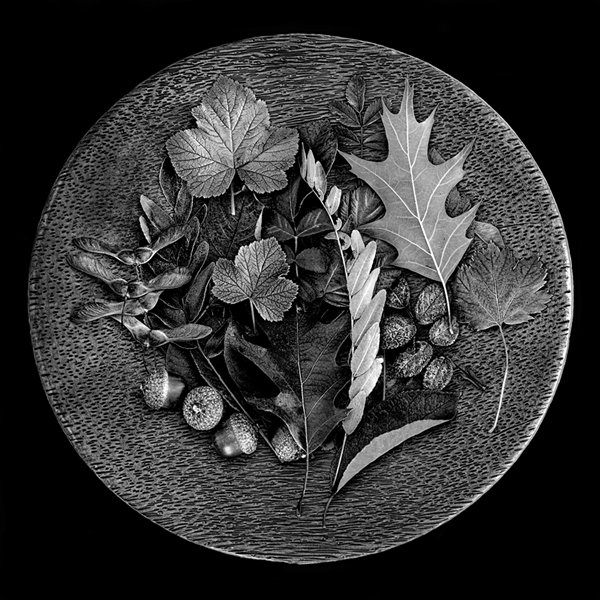
What Tips or Advice do you have for other aspiring photographers?
I always hesitate to give advice, because it comes from my perspective, but here are a few tips:
- Ignore the rules, and better yet, never learn them! They are restrictive and will only lead you to mediocre work that will look like everyone else’s that follow the rules.
- Develop your own vision and style and resist copying others. Don’t become an imitator, but a creator!
- Find projects that you have a burning passion for. If you don’t feel that way about your current project, change it!
- Do not accept the standard definition of success (fame, fortune, big name gallery representation and a published book) Define for yourself what success is and then purposely pursue it.
- Seek only to please yourself, because pleasing others is never success and is unfulfilling.
- Be a good person, this will help you be a good artist.
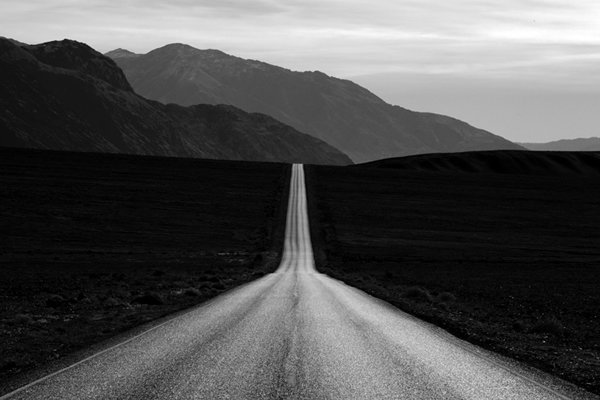
Quick Questions:
- What is your idea of happiness?
Having my family around me, some spare time to pursue my art and a few dollars in my pocket. - What is your greatest fear?
That I will hurt another person. - What do you consider your greatest achievement?
Raising five children who are good and successful. - Where would you like to live?
La Jolla in California, but only after about 5 million people move away first! - What is your most marked characteristic?
I have strong opinions and always think that I’m right. - What do you most appreciate in your friends?
That they see past my failings. - Who are your heroes in real life?
People who have suffered great tragedies and yet have chosen to have a great attitude about life. - What is your present state of mind?
Harried. - Who are your favorite authors?
Harper Lee (To Kill a Mockingbird) - What is your favorite motto?
Have I done any good in the world today?
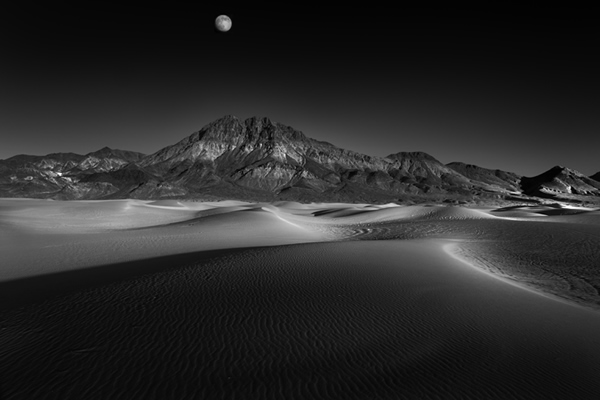
Thanks again for providing 121 Clicks with this opportunity to interview you. Any final thoughts for our readers?
I’ve enjoyed this interview, you have asked me some very good questions and it’s caused me to reflect on my work and motives. Thank you for this opportunity!
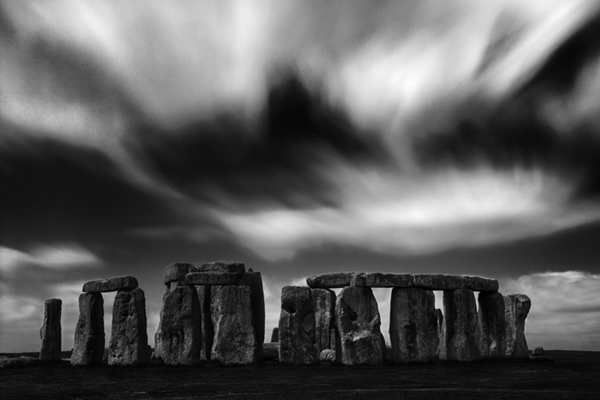
You can find Cole Thompson on the Web :
January 3, 2012


When I finish a series, I’m generally done with it and don’t add to it. It’ s nothing philosophical, I simply lose interest.
But the other day I was eating in my favorite Mexican Restaurant, the Rio Grande, and noticed this wonderful ceiling lamp. And like many ceiling lamps, it’s true beauty was only visible when viewed from directly below.
So I added a new image to the Ceiling Lamp series. Click here to view the entire series.
Cole
June 1, 2011
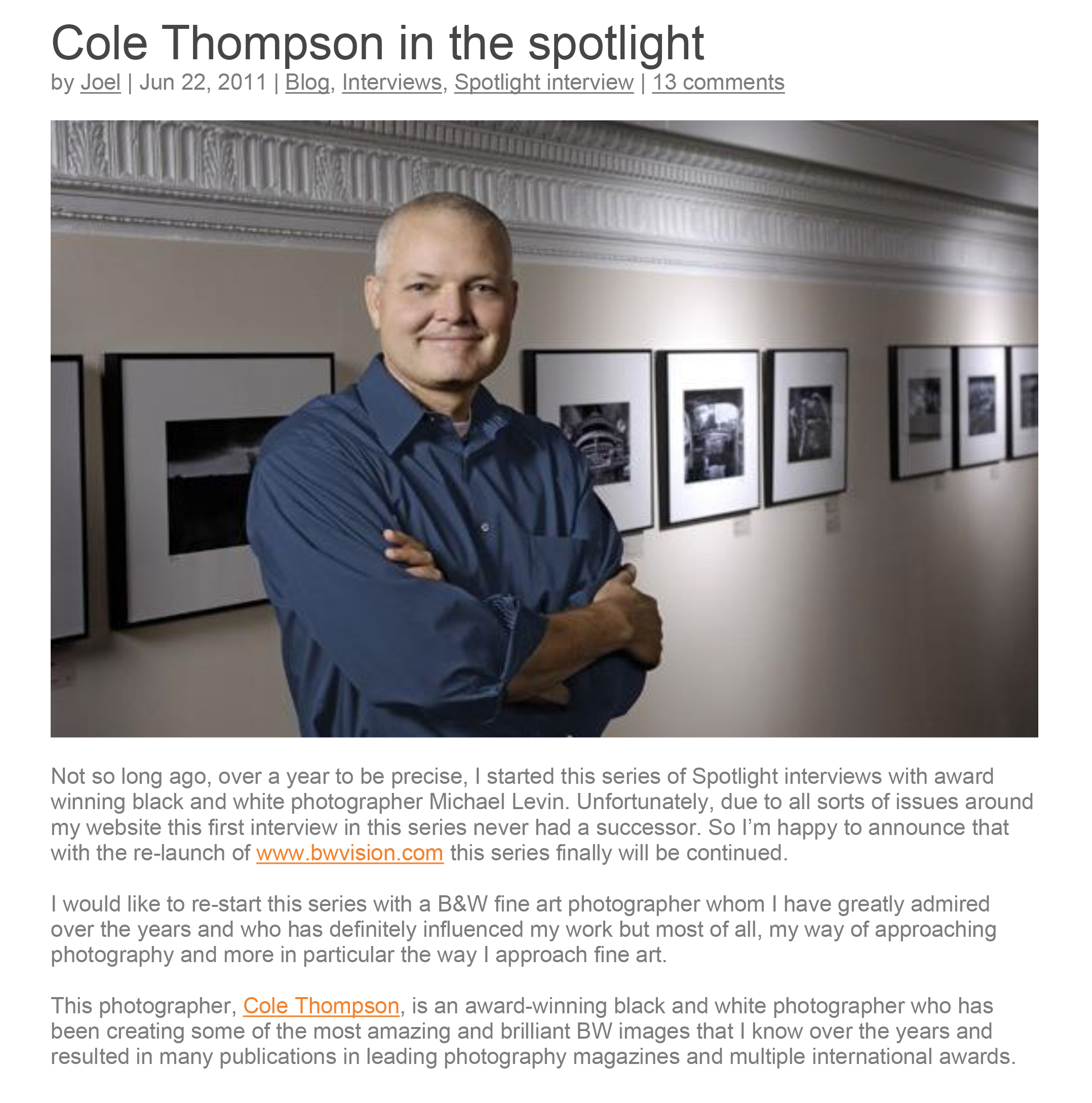
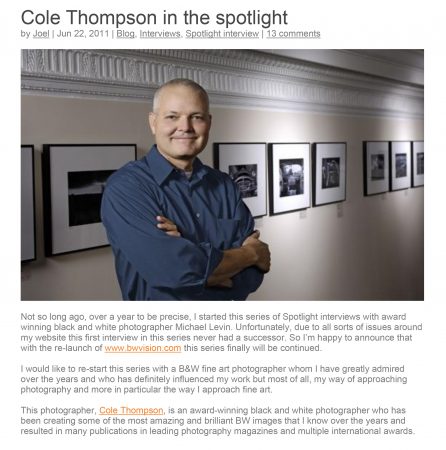
I don’t know if you’re familiar with Joel Tjintjelaar, but he’s a good friend of mine from the Netherlands. He’s also an amazing B&W photographer AND owns and runs BWVision.com. Joel is really busy!
Joel just interviewed me for his blog and you can read it here: BWVision Interview with Cole Thompson
You’ll want to keep an eye on BWVision.com over the next several weeks.
Cole
P.S. This is an image from my trip to Hawaii last week. A few more to come in my next newsletter.
February 10, 2011
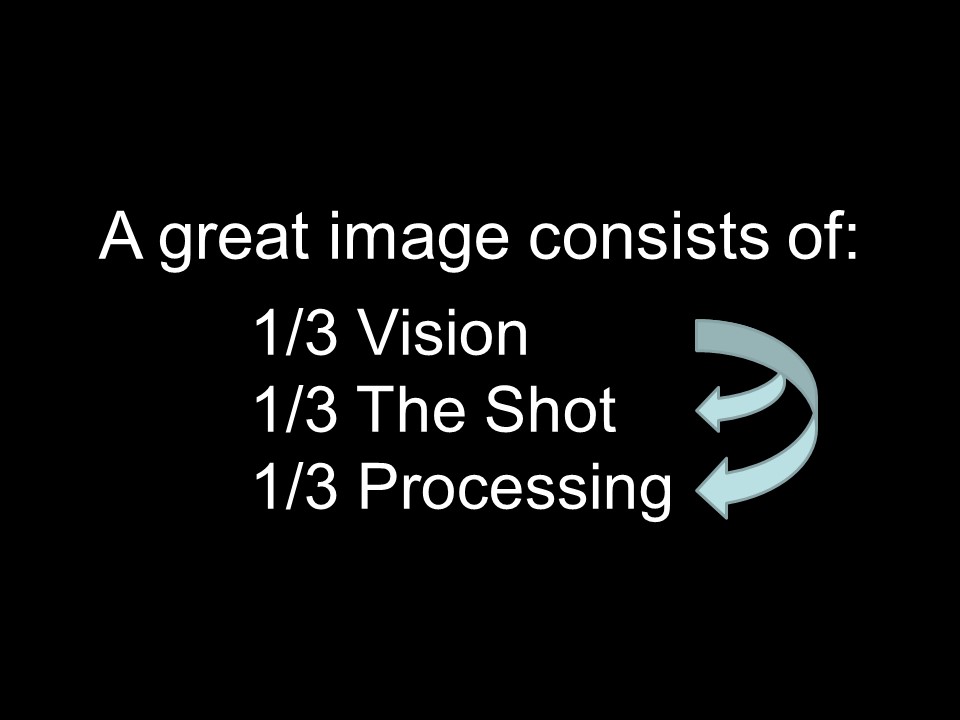
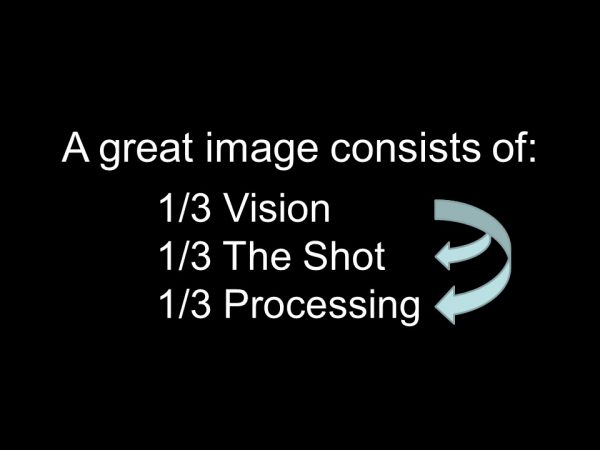

Many of you know of my disdain for photographic “rules” and so you might wonder why I’m writing about the “rule of thirds.” It’s because I’m writing about my rule of thirds:
A great image is comprised of 1/3 vision, 1/3 the shot and 1/3 processing
A great image begins and ends with your vision. Vision comes first and then it drives the shot and the processing.
Vision is a tough concept to describe, but I think each of us instinctively know how we want our image to look, and our job as an artist is to bring that image into compliance with our Vision.
When we pursue an image with Vision, then equipment and process becomes the servant and the creative process the master. It’s only then that great images can occur.
Vision is everything.
Cole
November 25, 2009
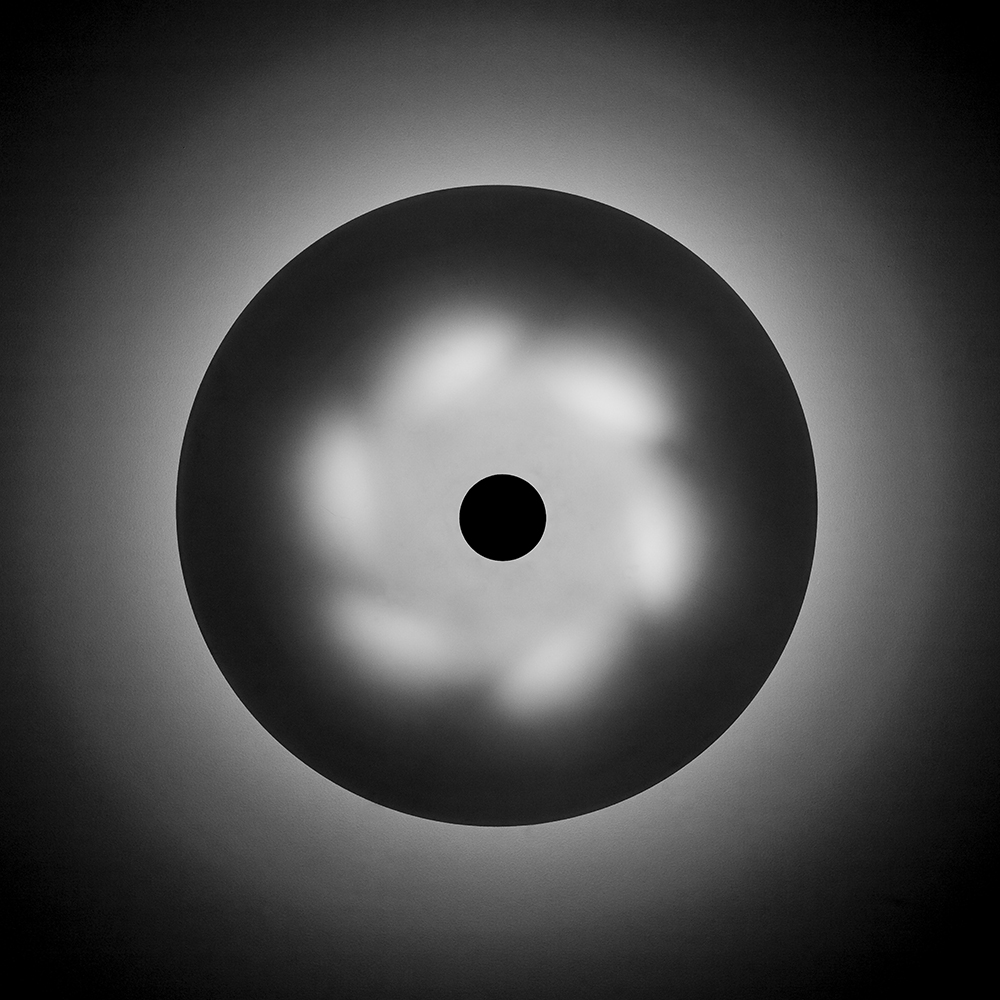
=
Did I lose something?
It was there before, but now it’s gone.
Where did it go?
Will it be back?
Two years ago I stood in the lobby of a hotel in Akron, Ohio and looked up. I saw saw a ceiling lamp, but it was more than that, it appeared to me as abstract shape that inspired me to create my Ceiling Lamps portfolio. The image above was that first lamp.
Now fast forward; three weeks ago I was back in Akron and staying at that very same hotel. Upon checking out I thought about that lamp and looked up. The lamp was still there, but to my surprise I could no longer “see” it, it just looked like an ordinary lamp to me. I thought to myself; I wonder why that lamp inspired me before?
That really kind of scared me, why didn’t it look special any more? What had I lost and could I get it back?

And what if I were walking down the street today and passed “The Angel Gabriel,” would he inspire me to stop?
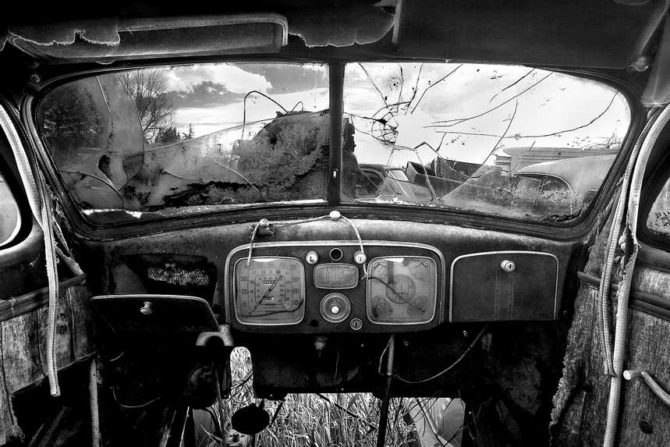
If I were to stumble across that “Old Car Interior” again, would it interest me enough to photograph it?
This experience reinforces two personal beliefs that I have: first to always stop because you may not “see” that inspiration later and second, you can keep going back to the same location over and over and over and still “see” something new. Seeing a great image has more to do with our creative mood, than with the location.
I’ll be back in Akron next year and I’ll be very curious see how I’ll “see” this lamp!
Cole
October 31, 2009


This week I was speaking to a High School photography student about how the images I create, look nothing like the images I shot. When I photograph something, I have a vision of what the final image will look like and I work to bring the captured image in line with that vision. My art does not try to faithfully reproduce what my eyes saw, but rather to recreate what I saw in my mind’s eye or my “vision.”
I characterize my creations as being composed of 50% the shot and 50% this vision. Bringing the shot into line with my vision starts with the image capture, sometimes I’ll underexpose like with “Alphie” above, to set the mood I’m trying to create. Transforming the image continues as I convert it to black & white, frequently using a lot of blue channel to give a contrasty and grainy look.
But most of my vision is introduced when I dodge and burn the image, working in Photoshop like I did in the darkroom, but with infinitely more control. Using a pen and tablet I paint the image to darken it, selectively enhance contrast and to tease out the highlights exactly where I want them. This step is where the “created” image can take a radical departure from the original shot.
Sometimes during processing I might see a new possibility or find a surprise in the image, but generally I know from the moment of capture what the finished image will look like. I think this ability comes from having a personal vision, knowing your capabilities and the limitations of your tools.
Alphie was created about a week ago off the Santa Cruz pier. It was early morning and the sea lions were just becoming active and lazily floating in the water; they seemed to be stretching and waking up. I photographed them as they took on various poses and once I saw this image, I knew that I had what I was looking for.
But as you look at Alphie, remember that you’re really seeing him through the lens of my vision, and not the lens of my camera.
Cole
October 19, 2009

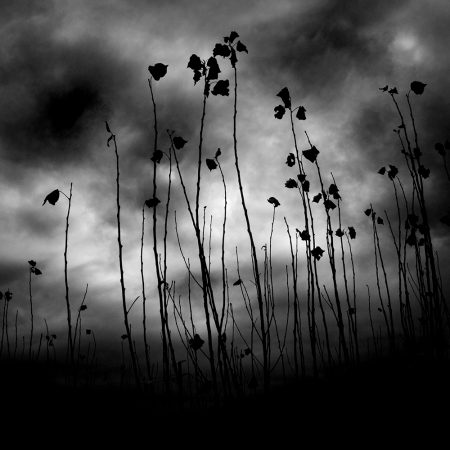
What inspires you? What gets your creative juices flowing or just gets you out the door?
I would really benefit from hearing what does it for you, because it just might work for me too. We all go through periods of stagnation, where we doubt our abilities or worry that we’ve got no more in us.
What causes this? Human nature I suppose.
Something I do is to listen to the Beatles, they were one of only a few groups that didn’t stuck in a “success” rut. They kept changing and evolving even if it meant abandoning a successful formula. They were not afraid to risk change.
How about you? Just thinking about this question will be therapeutic and posting it will help myself and others.
Cole
